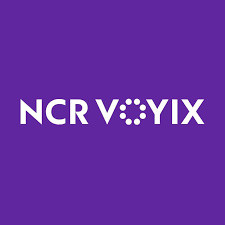
According to NCR Voyix, self-checkout continues to gain traction, with 43% percent of consumers expressing a preference for it over traditional checkout. The narrowing preference gap is reflected in the projected growth of self-checkout installations. RBR Data Services’ Global EPOS and Self-Checkout 2023 study forecasts 450,000 self-checkout installations in the U.S. in 2028, up from 280,000 in 2022.
A generational snapshot of responses from the Digital Commerce Index indicates that 53% of younger shoppers (ages 18 to 44) prefer self-checkout. Of those consumers who prefer self-checkout, speed, shorter lines and privacy are most important.
Shoppers aged 45 to 60+ prefer traditional checkout, but the top reason behind their choice is that they often have many products at check out and may find a regular lane less time-consuming.
“Self-checkout is evolving to offer a quicker and more user-friendly experience,” said David Wilkinson, chief executive officer of NCR Voyix. “The reality is shoppers want more control over their checkout experience and self-checkout delivers that flexibility. For retailers, self-checkout enhances operational efficiency in a time when many are struggling to retain staff and are combatting unprecedented levels of shrink.”
While online grocery shopping may be more convenient for those who don’t have time to shop in person, two-thirds of survey respondents prefer to shop for groceries in store. Challenges like out-of-stock items (62%), incorrect deliveries (52%) or unfulfilled orders (38%) contribute to poor online ordering experiences. Nearly two in five survey respondents (37%) said they abandoned an online order due to high service fees.
Some consumers also prefer to hand-select specific items like produce (59%) or meat (51%) themselves.
With inflation driving higher grocery prices, 74% of consumers surveyed have changed how they shop for groceries. Most are looking for less expensive items (56%), buying less overall (49%) or making a more deliberate decision to shop where they find the best deals (46%).
Consumers increasingly rely on technology to navigate smarter ways to shop. When asked how technology has changed their shopping experiences, consumers cited the ability to compare prices more frequently, research products before purchasing more frequently and use more digital payment options.
In the restaurant industry, consumers want the best customer service — but the surge in tipping prompts may be tipping them the wrong way. Thirty-six percent of consumers reported that they don’t like tipping prompts and therefore don’t tip at all.
Like grocery shopping, inflation has impacted consumer restaurant dining habits. Forty-eight percent said they dine out less now because of higher prices. More than half of consumers (58%) have purchased a meal at a gas station one or more times this year.
Although some consumers may be slowing down on traditional dining out, they still want to keep up with their favorite restaurants and access any deals they can. Signing up for a loyalty rewards program, downloading a restaurant’s app and signing up for email updates are among the top three actions consumers have taken to receive updates on their favorite restaurants.
With consumers eager to stay in the know and gain access to special deals and rewards, half of consumers prefer to use a restaurant’s app or website to place their order, while 23% prefer to call the restaurant directly. Consumers cite their top reasons for going directly to the restaurant’s app or website for order and delivery as convenience, the ability to easily customize orders and lower or no service fees.
As consumers look to the future and consider new technology in restaurants, they hope to see customized digital menus personalized per diner, full meal vending machines and robot delivery service.
“The results are in, and it’s clear consumers want ease, speed and innovative experiences whether they are at the grocery checkout, gas pump or favorite restaurant,” said Wilkinson. “As retailers and restaurants consider their technology investments for 2024, these consumer insights can help prioritize and deliver what consumers want.”
NCR Voyix commissioned a blind survey of American consumers in November 2023 to understand how dining, grocery and fuel convenience purchase behaviors are changing. Respondents to the online survey included a total of 1,133 American consumers. The margin of error for this survey is +/- 2.981%.